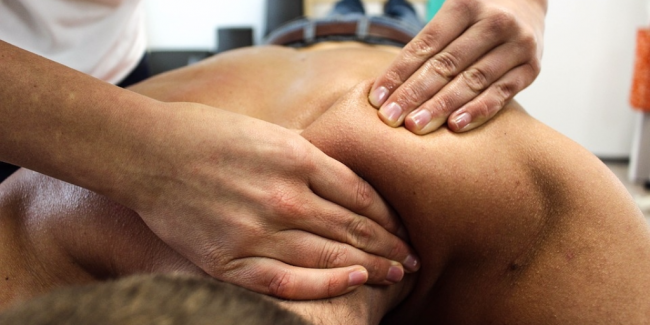Physio vs. Chiro vs. Osteo.
Published on
09 Jan 2017

Call us on: (03) 9975 4133
You’ve probably heard of these professions, but do you know the difference between them? In this week’s article, Kirstie Tyson sets the record straight.
Making the distinction.
Many people come into our clinic wondering what they’re in for. Maybe it’s their first time seeing a physio, or they have experienced varied treatments at other clinics.
Most of the time however, clients can be confused about the difference between a physio, a chiro, an osteo, an exercise physiologist and a personal trainer…the list goes on.
We hope to clear this up for you – it’s important that the distinctions between these professions are clear when making a decision for your needs and purpose.
Physiotherapy
Let’s start with physiotherapy – given it’s what we do best!
Physiotherapists (or Physical Therapists if you hail from the United States) are involved in all areas of patient care and medicine. Physio is an allied health profession that emphasises assessment, diagnosis, treatment and prevention of injury, illness or disability.
It focuses on movement and function as the underlying basis for rehabilitation and treatment. Most physiotherapists look at the injured area, and surrounding areas that biomechanically and functionally contribute to the region. The outcome is often self-management.
Treatment utilises a wide variety of evidence based techniques including, but not limited to: functional exercise, mobilisation, manipulation, soft tissue release, taping, biofeedback and ultrasound assessment.
Physios may also be involved in ergonomic or workplace assessment and sports performance enhancement.
You could say our job is to make ourselves redundant.
Chiropractic
Chiropractors approach treatment from a neural integration point of view: their view is focused on the relationship between the nervous system and the spine.
They typically utilise manipulations or adjustments to treat spinal segments with the goal of decreasing pain, correcting alignment problems and supporting the body’s natural ability to self-heal.
They may also use complementary therapies including heat/cold packs, electrotherapy and general exercise to complement their treatment.
Osteopathy
Osteopaths approach treatment through a holistic lens by looking at the body as a whole unit (or rather, they look at it as possessing an innate self-healing mechanism).
They typically utilise a combination of manipulations, stretching and soft tissue release in order to encourage and promote healing. The aim is to affect the body’s nervous, circulatory and lymphatic systems.
Exercise physiology
A relatively new allied health profession available to the public, exercise physiology serves to complement physiotherapy.
These days, many physiotherapists are trained in exercise physiology and/or sports science prior to pursuing their physiotherapy degrees.
Exercise physiologists primarily focus on the delivery of exercise to assist with the prevention and management of chronic diseases and injuries. They typically do not utilise any ‘hands-on’ or manual treatment techniques, but purely encourage exercise as the basis for recovery and symptom management.
The best way to think of it is that they teach you how to exercise well. Exercise physiologists may also be involved in high-level training in order to help facilitate return to sport after injury and can be involved in performing ergonomic assessment.
Personal trainers
Most people will be aware by now of what a PT does. They are typically employed in gym settings to provide motivation and direction to clients and assist with achieving fitness goals. The scope of this profession includes exercise prescription, fitness supervision for general wellbeing and health advice.
They primarily teach you how to exercise. Personal trainers are employed typically in boot camp settings, gyms, crossfit gyms and the like.
We’re here to help.
Ultimately, it’s up to the individual to choose a treatment that suits their needs and works for them. If you require treatment that is both effective and preventative, we have a range of options to help you recover and stay injury free.
For additional information, get in touch or make an appointment with one of our friendly staff today.
Back to blog home